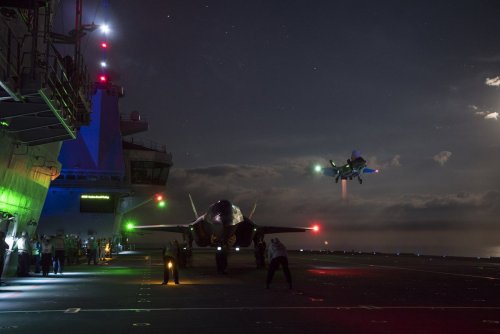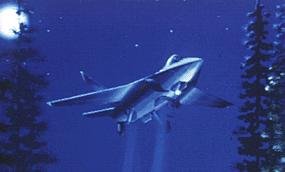thefrecklepuny
ACCESS: Confidential
- Joined
- 19 January 2008
- Messages
- 120
- Reaction score
- 87
Archibald said:Hood said:The bulk of the airgroups of these carriers will be helicopters. Up to 15 Merlins alongside the F-35s in the normal airgroup and in the amphibious role a mix JHC Chinooks, Merlins, Wildcats and Apaches.
For the sake of dozen or so F-35s the cost probably isn't worth it given the V/STOL capability. It's hard to imagine future naval AEW and ASW platforms not being helicopters or tilt-rotors.
This is really stupid (not you Hood: rather the logic you describe).
This is the size of a Forrestal, yet the RN will use it as a glorified Iwo Jima LPH ! See also Moskva, HMS Ocean. It is not even an amphibious ship !
For the cost of such monstrosity the RN could have bought
a) a true Forrestal-size super carrier, CATOBAR
or
b) a pair of 30 000 tons Juan Carlos amphibious ships
or
c) a trio of 15 000 tons Invincible class Harrier carriers
or
d) a trio of HMS Ocean helicopter carriers, derived from the Invincible class
Nobody is building non-amphibious helicopter carriers anymore (such as Moskva or Iwo Jima, at least HMS Ocean was derived from the Invincibles). Except the RN. This is silly !
I think the RN should have decided early on for the V/STOL F-35, then designed a ship to carry 15 or 20 of them, what minimal size and tonnage do you need for such airgroup ?
Let's take the 43 000 tons Charles de Gaulle as a comparison. It can carry 28 to 40 aircrafts, all of them as big as a VSTOL F-35. Now shrunk this to 20-25 aircrafts, remove the CATOBAR gear, and the nuclear reactor, and such a ship should be no bigger than a Clemenceau, that is, 33000 tons. So no need for twice the tonnage !
what's the point of such a big ship ? The RN would have been better served with a 25 000 / 30 000 tons enlarged Invincible class, big enough to carry 20 VSTOL F-35.
Invincible did a pretty good job in the Falklands with a DOZEN of subsonic + AIM-9 + non-stealth Sea Harriers. The F-35 is a huge leap in performance, add some more (12 to 20) and there you go, a good enough aircraft carrier.
I agree in general. The QE carriers are too big for what they may be being asked to provide. At 65,000 t, they could support the F-35C comfortably using catapults. But more than this, a CATOBAR ship allows more flexibility. If wanting to save a bit of cash, then F/A-18E/F's are a reasonable alternative. It also means the use of E-2D providing more capabilities than a Merlin based AEW.For STOVL operations, everything is dictated by the STOVL capabilities of the fast jet.
Remember, the QE class is heavier than the old Midway class. Which could carry more tactical types and was not a helo carrier with a fast jet sqn attatched.





